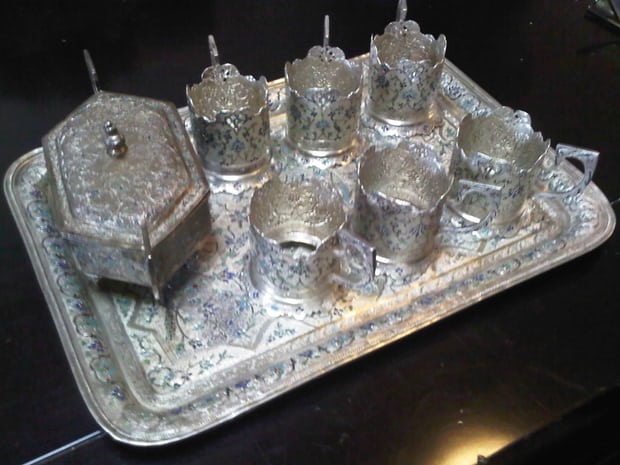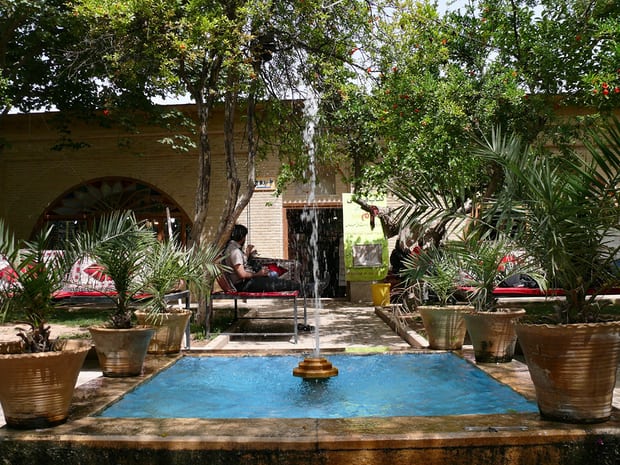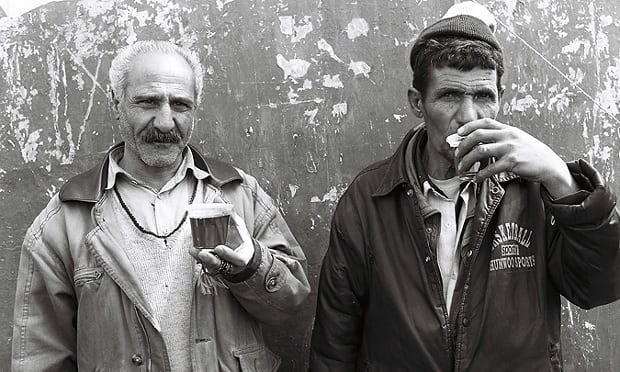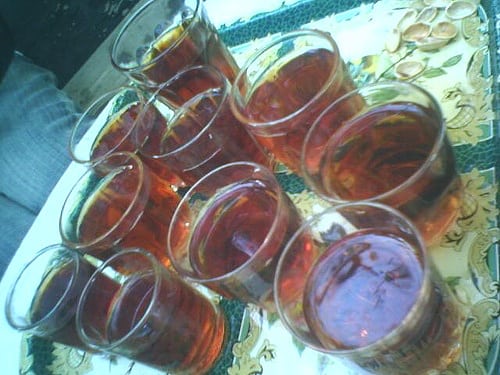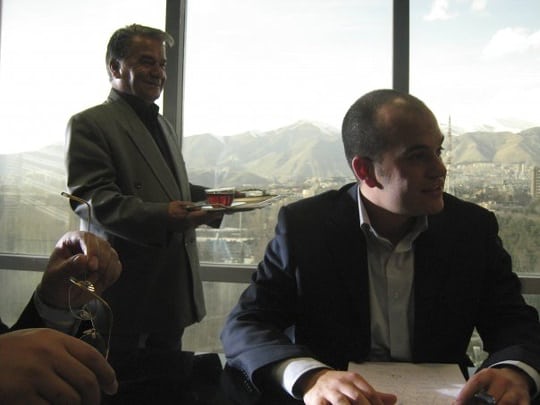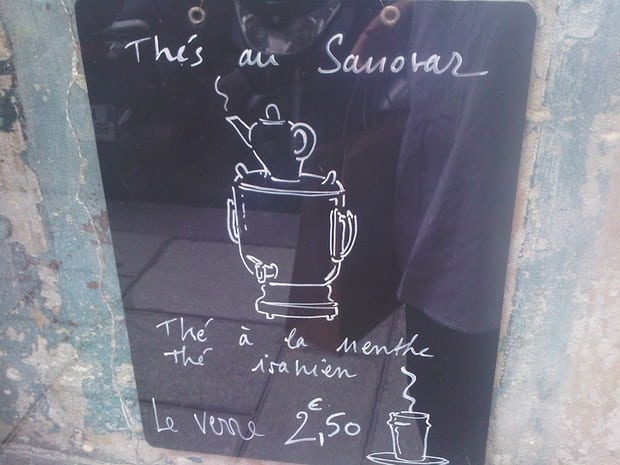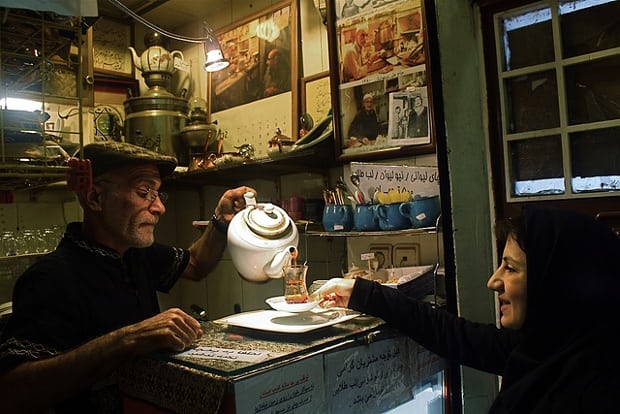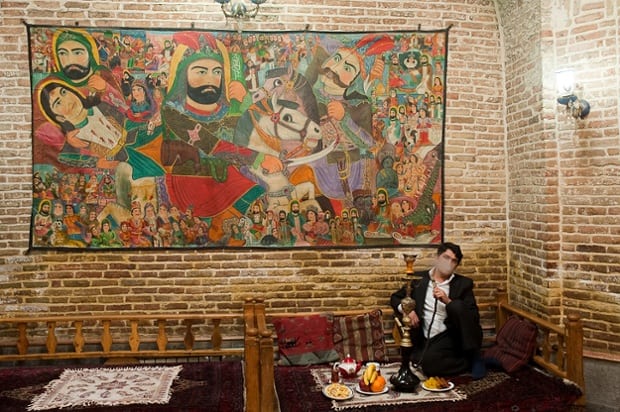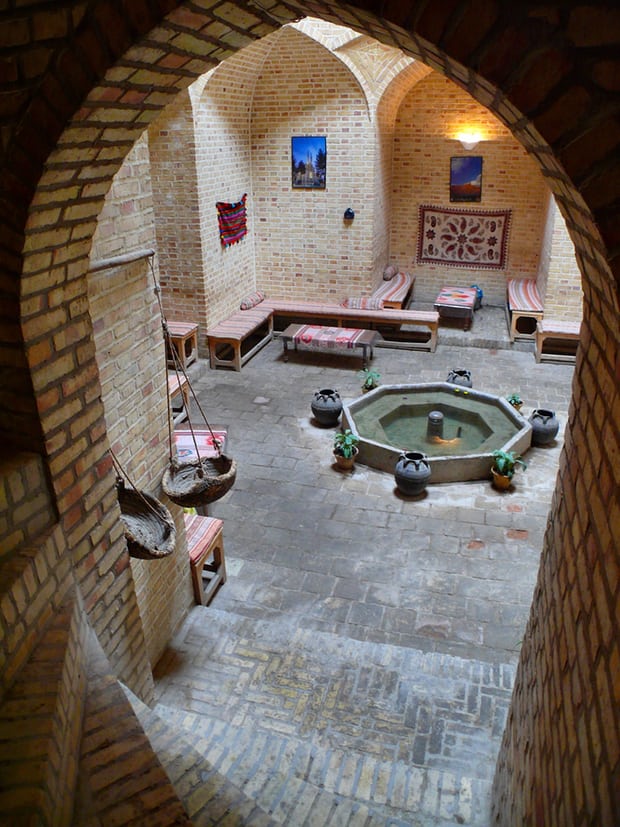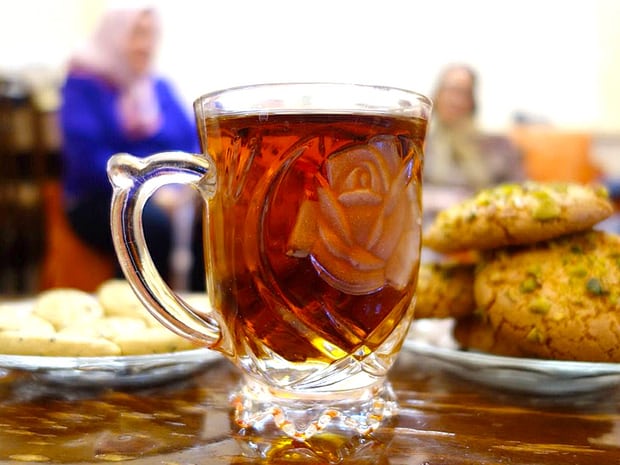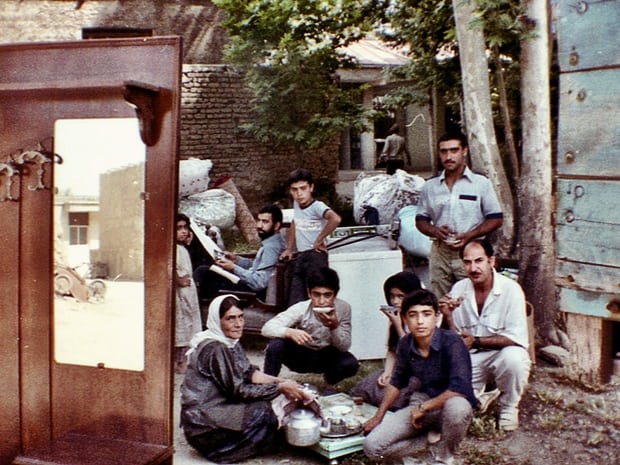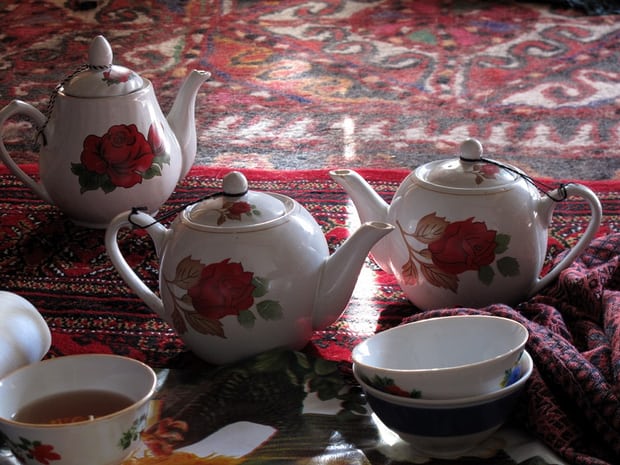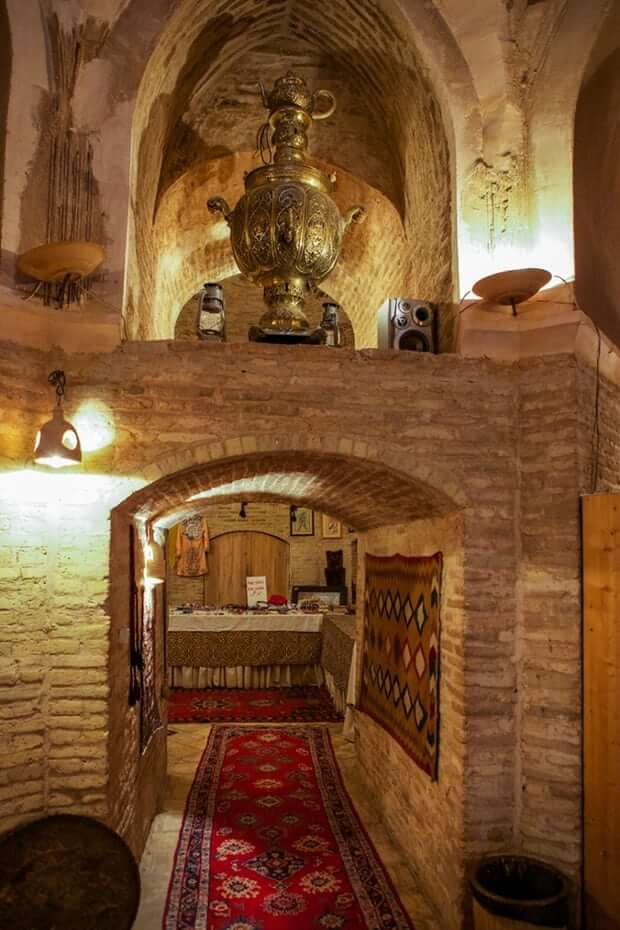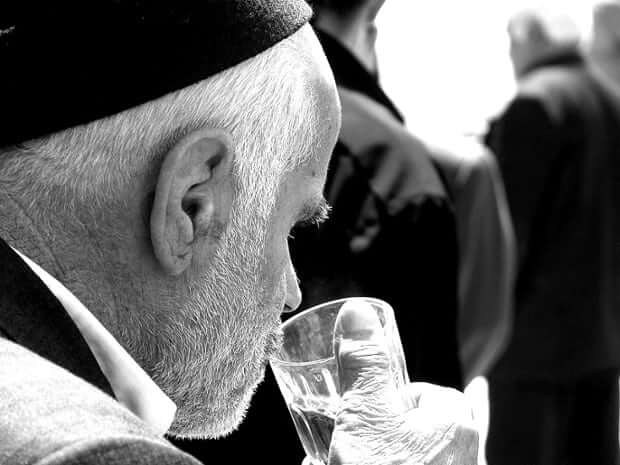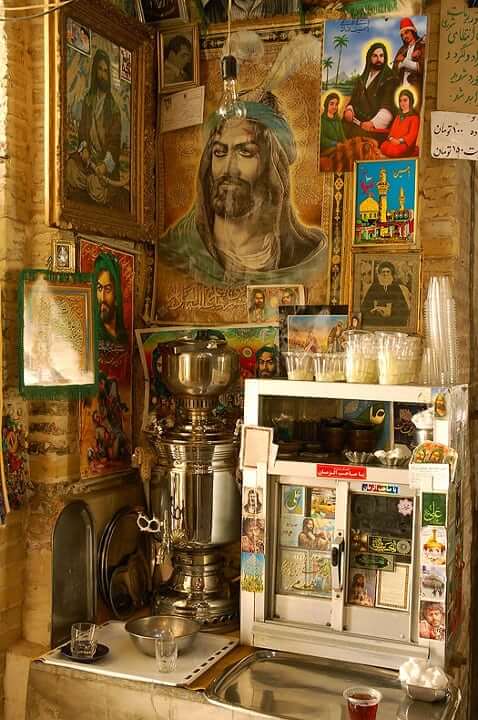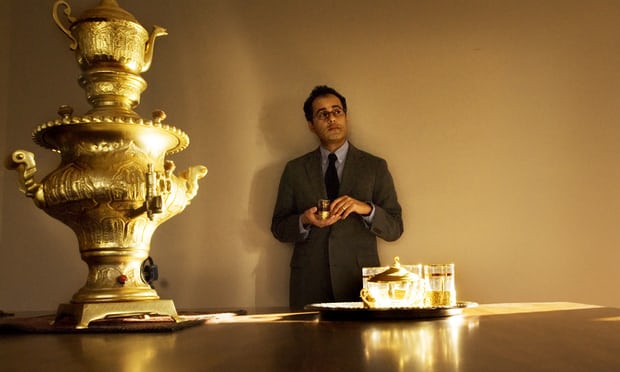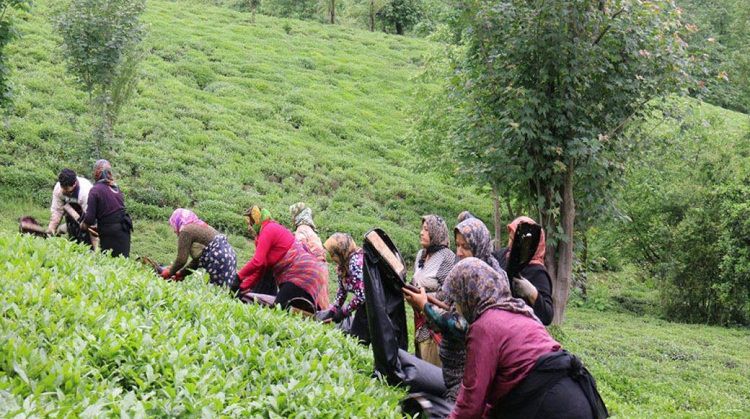One of my fondest memories of growing up in Iran is having tea with my great grandmother in Shemiran. She presided over a long rectangular room in north Tehran seated on her prayer mat facing my grandfather’s rose garden and fruit trees. I sat cross-legged on the floor next to her. Large Persian rugs covered the cold tiled floors underneath. Paisley-specked wallpaper adorned the walls.
Two items were within her grasp: her Quran and a steaming samovar on a short side table to her right. “Would you like some tea?” she would ask, with a quiet smile around her eyes and lips, when she noticed me. I would lean in to kiss her soft cheeks.
A ceramic teapot with a drawing of a red rose warmed, soaked and sunk a spoonful of fragrant tea leaves to the bottom, turning the water a perfect shade of brown, a touch golden as it poured out of the spout and tangled with the sunlight coming over the horizon. She poured the tea thick and potent for the adults, and ceremoniously, containing only a hint of colour, to the great-grandkids. Boiling water from the samovar reduced the intensity even more.
My favourite article about tea, written for the Tehran Bureau a few years ago, recounts an epic search for that great cup of tea, the one we Iranians make best, but can only taste in our memories – “clear, crisp, brilliant, and separate from the water. The water was not part of the tea, it was there just to extract the right essences and bear them forth in the most neutral manner.” (Kind of like good old-fashioned journalism?)
As our correspondent put it, “Each time I have tea, alone or with friends, unexpected memories bubble up in association with a certain glass, always held with the rim between the thumb and the forefinger, and balanced on the edge of the pinkie. The flashbacks are to events that tea has somehow impressed upon the memory better than any other device. The memories are like pictures tagged by the teas that were experienced then.”
The next best thing to those memories – however distant a second – are a collection of photos.
